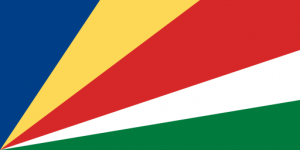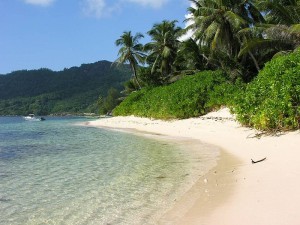Seychelles

Aviation History/Histoire des Seychelles
“Figure; Pape Jean-Paul II, Queen Elizabeth II, President Jean-Francois Mitterrand, President Hu Jintao, President France Albert Rene, President James Michel, Madame Indira Priyadarshini Gandhi (इंदिरा प्रियदर्शिनी गांधी), President Robert Mougabe and Dalida.
Seychelles (![]() i/seɪˈʃɛlz/ say-shelz; French: [sɛʃɛl]), officially the Republic of Seychelles (French: République des Seychelles; Creole: Repiblik Sesel), is a 115-island country spanning an archipelago in the Indian Ocean, some 1,500 kilometres (932 mi) east of mainland Africa, northeast of the island of Madagascar.
i/seɪˈʃɛlz/ say-shelz; French: [sɛʃɛl]), officially the Republic of Seychelles (French: République des Seychelles; Creole: Repiblik Sesel), is a 115-island country spanning an archipelago in the Indian Ocean, some 1,500 kilometres (932 mi) east of mainland Africa, northeast of the island of Madagascar.
Other nearby island countries and territories include Zanzibar to the west, Mauritius, Rodrigues, Agaléga and Réunion to the south, and Comoros and Mayotte to the southwest. Seychelles, with an estimated population of 86,525, has the smallest population of any African state. It has the highest Human Development Index in Africa and the highest income inequality in the world, as measured by the Gini index. Seychelles is a member of the African Union.
Scholars assume that Austronesian seafarers and later Maldivian and Arab traders were the first to visit the uninhabited Seychelles. Remains of Maldivian mariner presence from the 12th century were found in Silhouette Island. The earliest recorded sighting by Europeans took place in 1502 by the Portuguese Admiral Vasco da Gama, who passed through the Amirantes and named them after himself (islands of the Admiral).
A transit point for trade between Africa and Asia, the islands were occasionally used by pirates until the French began to take control starting in 1756 when a Stone of Possession was laid by Captain Nicholas Morphey. The islands were named after Jean Moreau de Séchelles, Louis XV‘s Minister of Finance.
The British contested control over the islands between 1794 and 1810. Jean Baptiste Quéau de Quincy, French administrator of Seychelles during the years of war with the United Kingdom, declined to resist when armed enemy warships arrived. Instead, he successfully negotiated the status of capitulation to Britain which gave the settlers a privileged position of neutrality.
Britain eventually assumed full control upon the surrender of Mauritius in 1810, formalised in 1814 at the Treaty of Paris. Seychelles became a crown colony separate from Mauritius in 1903. Elections were held in 1966 and 1970. Independence was granted in 1976 as a republic within the Commonwealth. In 1977, a coup d’état ousted the first president of the republic, James Mancham, who was replaced by France Albert René. The 1979 constitution declared a socialist one-party state, which lasted until 1991. The first draft of a new constitution failed to receive the requisite 60% of voters in 1992, but an amended version was approved in 1993.
In January 2013, the country declared a state of emergency; the tropical cyclone Felleng caused torrential rain, and flooding and landslides destroyed hundreds of houses.
Politics
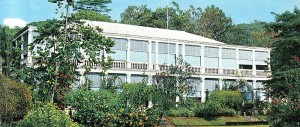 State House, Victoria, the seat of the President.
State House, Victoria, the seat of the President.
The Seychelles president, who is head of state and head of government, is elected by popular vote for a five-year term of office. The previous president, France Albert René, first came to power after his supporters overthrew the first president James Mancham on 5 June 1977 in a bloody coup d’état and installed him as president. He was at that time the current prime minister. He ruled under a dictatorial one party state communist system until in 1993 he was forced to introduce a multi-party system. He stepped down in 2004 in favour of his vice-president, James Michel, who was re-elected in 2006. Michel was re-elected in 2011.
The cabinet is presided over and appointed by the president, subject to the approval of a majority of the legislature.
The unicameral Seychellois parliament, the National Assembly or Assemblée Nationale, consists of 34 members, of whom 25 are elected directly by popular vote, while the remaining nine seats are appointed proportionally according to the percentage of votes received by each party. All members serve five-year terms.
The main rival parties are the ruling socialist Seychelles People’s Progressive Front (SPPF). As of 2009 the SPPF became the People’s Party (PP) or Parti Lepep (LP) and the liberal democrat Seychelles National Party (SNP). Politics has been an integral part of the lives of the Seychellois since its inception in the early sixties. The range of opinion spans socialist and liberal democratic ideology.
Seychelles is part of the Indian Ocean Commission (IOC), La Francophonie and the Commonwealth of Nations.
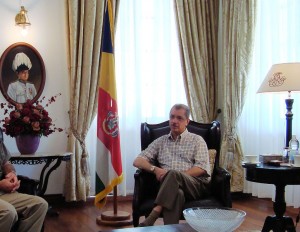 President James Michel in his office in Victoria, 2009.
President James Michel in his office in Victoria, 2009.
Until the mid-19th century, little formal education was available in Seychelles; the Catholic and Anglican churches opened mission schools in 1851. The Catholic mission later operated boys’ and girls’ secondary schools with religious Brothers and nuns from abroad even after the government became responsible for them in 1944. A teacher training college opened in 1959, when the supply of locally trained teachers began to grow, and in short time many new schools were established. Since 1981 a system of free education has been in effect requiring attendance by all children in grades one to nine, beginning at age five. Ninety percent of all children attend nursery school at age four.
The literacy rate for school-age children rose to more than 90% by the late 1980s. Many older Seychellois had not been taught to read or write in their childhood; adult education classes helped raise adult literacy from 60% to a claimed 85% in 1991.
Currently the public school system consists of 23 crèches, 25 primary schools and 13 secondary schools. The schools are on Mahé, Praslin, La Digue and Silhouette. There are three private schools: École Française, International School and the Independent school. All the private schools are on Mahé, and the International School has a branch on Praslin. There are seven post-secondary (non-tertiary) schools: the Seychelles Polytechnic, School of Advanced Level Studies, National Institute of Education, Seychelles Institute of Technology, Maritime Training Centre, Seychelles Agricultural and Horticultural Training Centre and the National Institute for Health and Social Studies.
The current administration has advanced plans to open a university in an attempt to slow down the brain drain that has occurred. University of Seychelles, initiated in conjunction with the University of London, is launching education programmes which will include teaching and lead to the award of the recognised qualifications from the University of London.
Geography
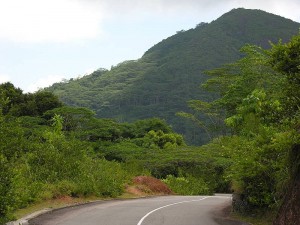 Dense Forests on Mahé Island.
Dense Forests on Mahé Island.
An island nation, Seychelles is located to the northeast of Madagascar and about 1,600 km (994 mi) east of Kenya. The number of islands in the archipelago is often given as 115 but the Constitution of the Republic of Seychelles lists 155. The islands as per the Constitution are divided into groups as follows.
There are 42 granitic islands, in descending order of size: Mahé, Praslin, Silhouette Island, La Digue, Curieuse, Felicite, Frégate, Ste-Anne, North, Cerf, Marianne, Grand Sœur, Thérèse, Aride, Conception, Petite Sœur, Cousin, Cousine, Long, Récif, Round (Praslin), Anonyme, Mamelles, Moyenne, Île aux Vaches Marines, L’Islette, Beacon (Île Sèche), Cachée, Cocos, Round (Mahé), L’Ilot Frégate, Booby, Chauve Souris (Mahé), Chauve Souris (Praslin), Île La Fouche, Hodoul, L’Ilot, Rat, Souris, St. Pierre (Praslin), Zavé, Harrison Rocks (Grand Rocher).
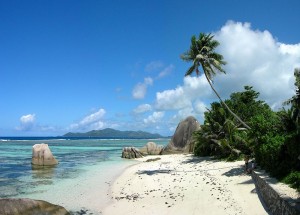 The beach of Anse Source d’Argent on La Digue
The beach of Anse Source d’Argent on La Digue
There are two coral sand cays north of the granitics: Denis and Bird.
There are two coral islands south of the granitics: Coëtivy and Platte.
There are 29 coral islands in the Amirantes group, west of the granitics: Desroches, Poivre Atoll (comprising three islands—Poivre, Florentin and South Island), Alphonse, D’Arros, St. Joseph Atoll (comprising 14 islands—St. Joseph Île aux Fouquets, Resource, Petit Carcassaye, Grand Carcassaye, Benjamin, Bancs Ferrari, Chiens, Pélicans, Vars, Île Paul, Banc de Sable, Banc aux Cocos and Île aux Poules), Marie Louise, Desnoeufs, African Banks (comprising two islands—African Banks and South Island), Rémire, St. François, Boudeuse, Etoile, Bijoutier.
There are 13 coral islands in the Farquhar Group, south-southwest of the Amirantes: Farquhar Atoll (comprising 10 islands—Bancs de Sable Déposés Île aux Goëlettes Lapins Île du Milieu North Manaha South Manaha Middle Manaha North Island and South Island), Providence Atoll (comprising two islands—Providence and Bancs Providence) and St Pierre.
There are 67 raised coral islands in the Aldabra Group, west of the Farquhar Group: Aldabra Atoll (comprising 46 islands—Grande Terre, Picard, Polymnie, Malabar, Île Michel, Île Esprit, Île aux Moustiques, Ilot Parc, Ilot Emile, Ilot Yangue, Ilot Magnan, Île Lanier, Champignon des Os, Euphrate, Grand Mentor, Grand Ilot, Gros Ilot Gionnet, Gros Ilot Sésame, Heron Rock, Hide Island, Île aux Aigrettes, Île aux Cèdres, Îles Chalands, Île Fangame, Île Héron, Île Michel, Île Squacco, Île Sylvestre, Île Verte, Ilot Déder, Ilot du Sud, Ilot du Milieu, Ilot du Nord, Ilot Dubois, Ilot Macoa, Ilot Marquoix, Ilots Niçois, Ilot Salade, Middle Row Island, Noddy Rock, North Row Island, Petit Mentor, Petit Mentor Endans, Petits Ilots, Pink Rock and Table Ronde), Assumption Island, Astove and Cosmoledo Atoll (comprising 19 islands—Menai, Île du Nord (West North), Île Nord-Est (East North), Île du Trou, Goëlettes, Grand Polyte, Petit Polyte, Grand Île (Wizard), Pagode, Île du Sud-Ouest (South), Île aux Moustiques, Île Baleine, Île aux Chauve-Souris, Île aux Macaques, Île aux Rats, Île du Nord-Ouest, Île Observation, Île Sud-Est and Ilot la Croix).
According to the president of Nauru, the Seychelles has been ranked the ninth most endangered nation due to flooding from climate change.
Climate
The climate is equable although quite humid, as the islands are small, classified by Köppen-Geiger system as tropical rain forest (Af). The temperature varies little throughout the year. Temperatures on Mahé vary from 24 to 30 °C (75 to 86 °F), and rainfall ranges from 2,900 mm (114 in) annually at Victoria to 3,600 mm (142 in) on the mountain slopes. Precipitation is somewhat less on the other islands. During the coolest months, July and August, the average low is about 24 °C (75 °F). The southeast trade winds blow regularly from May to November, and this is the most pleasant time of the year. The hot months are from December to April, with higher humidity (80%). March and April are the hottest months, but the temperature seldom exceeds 31 °C (88 °F). Most of the islands lie outside the cyclone belt, so high winds are rare.

